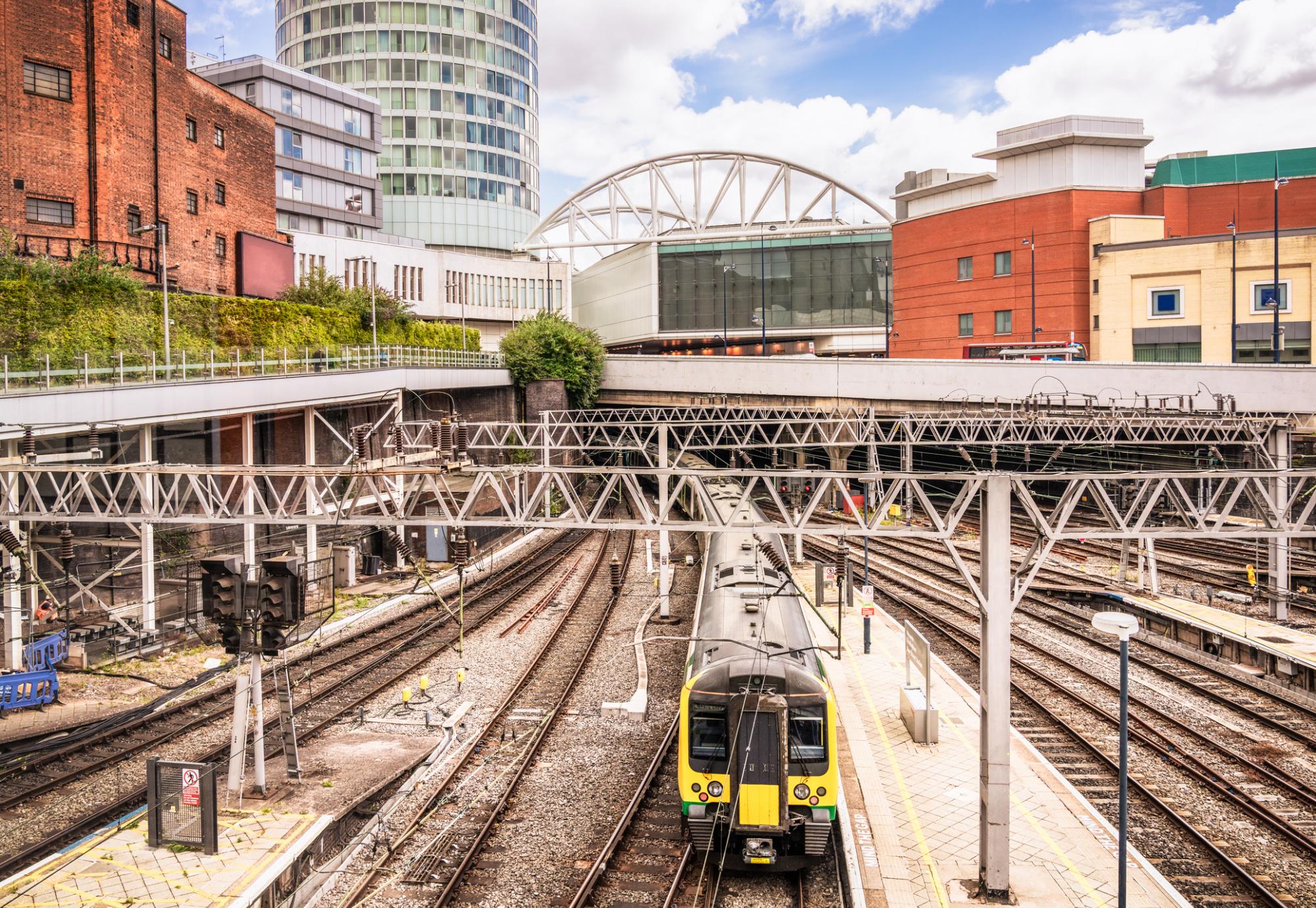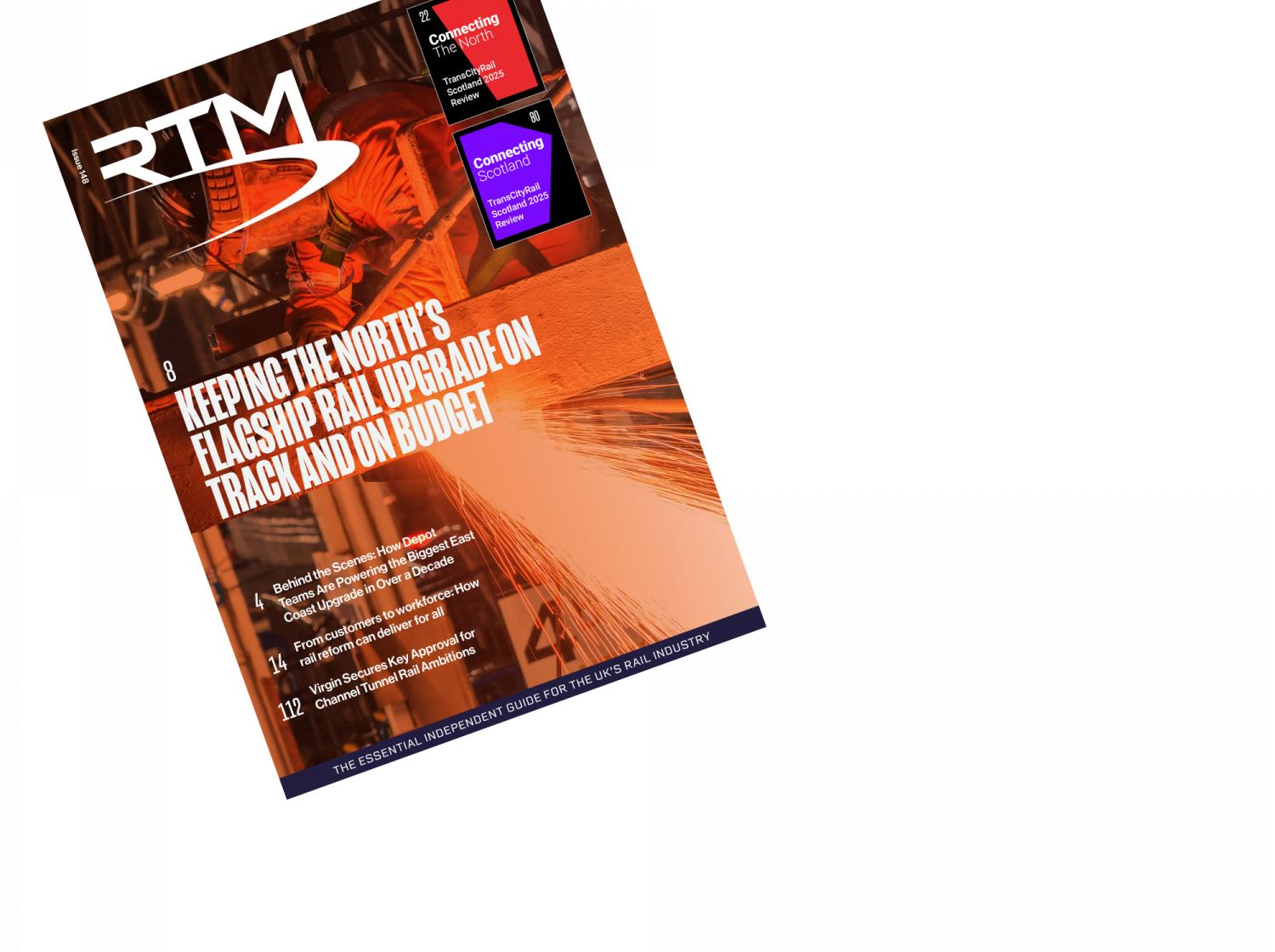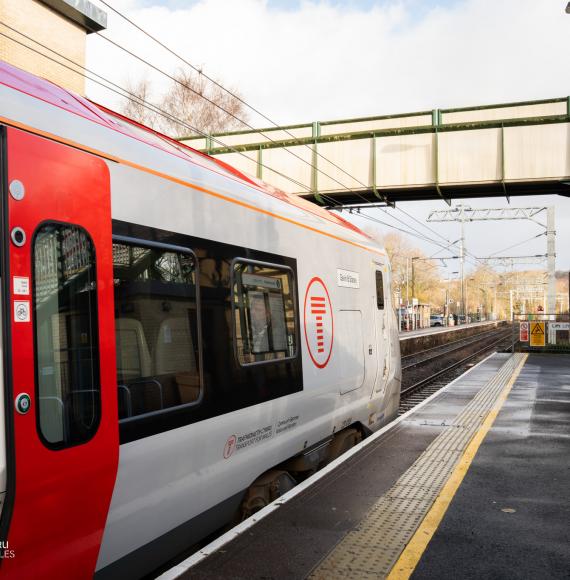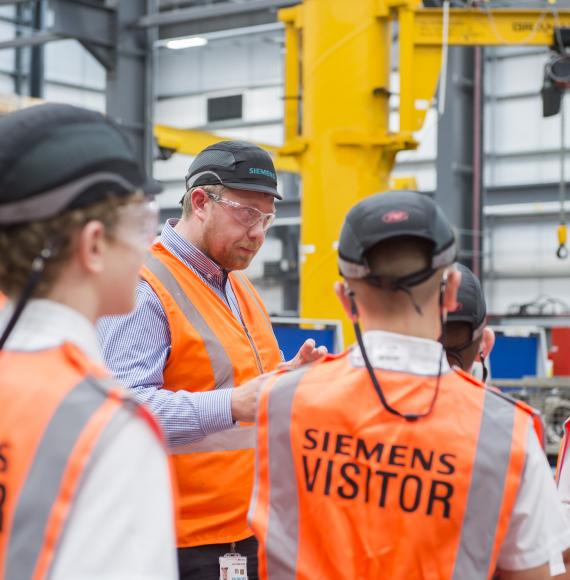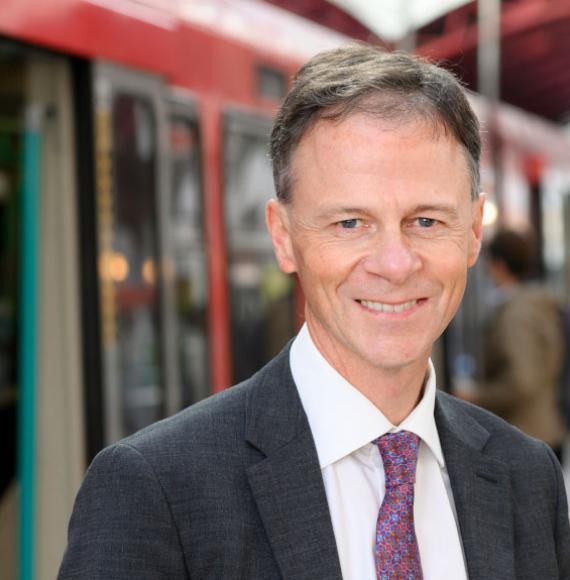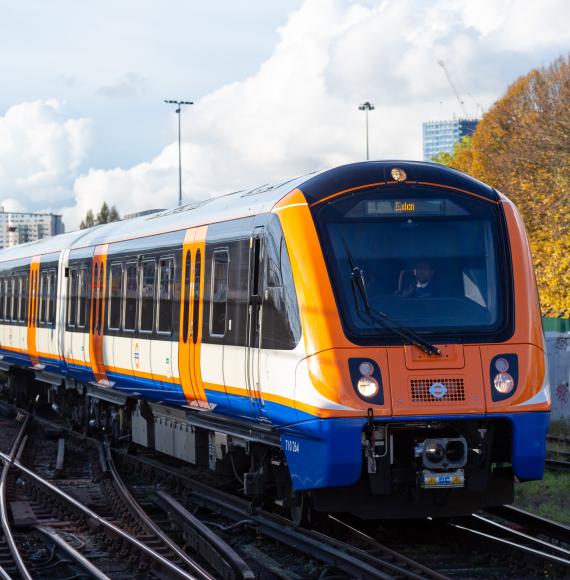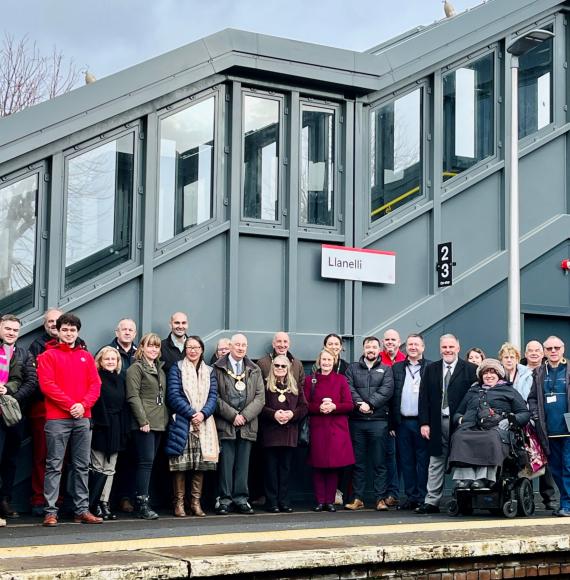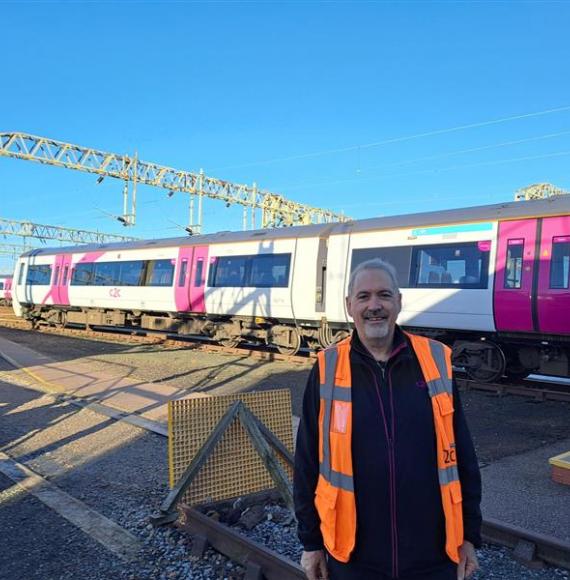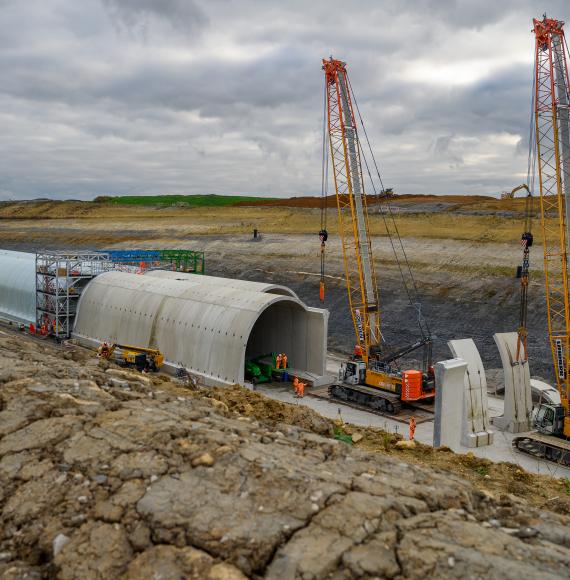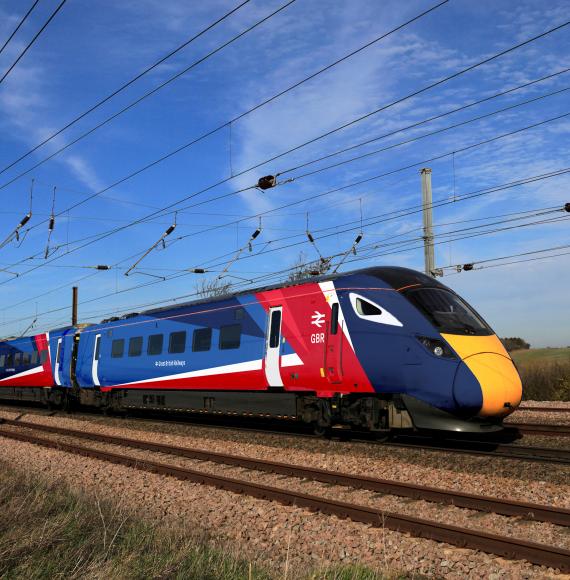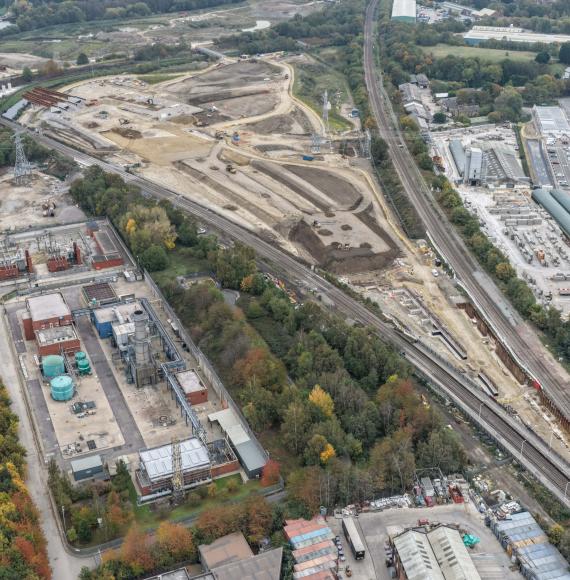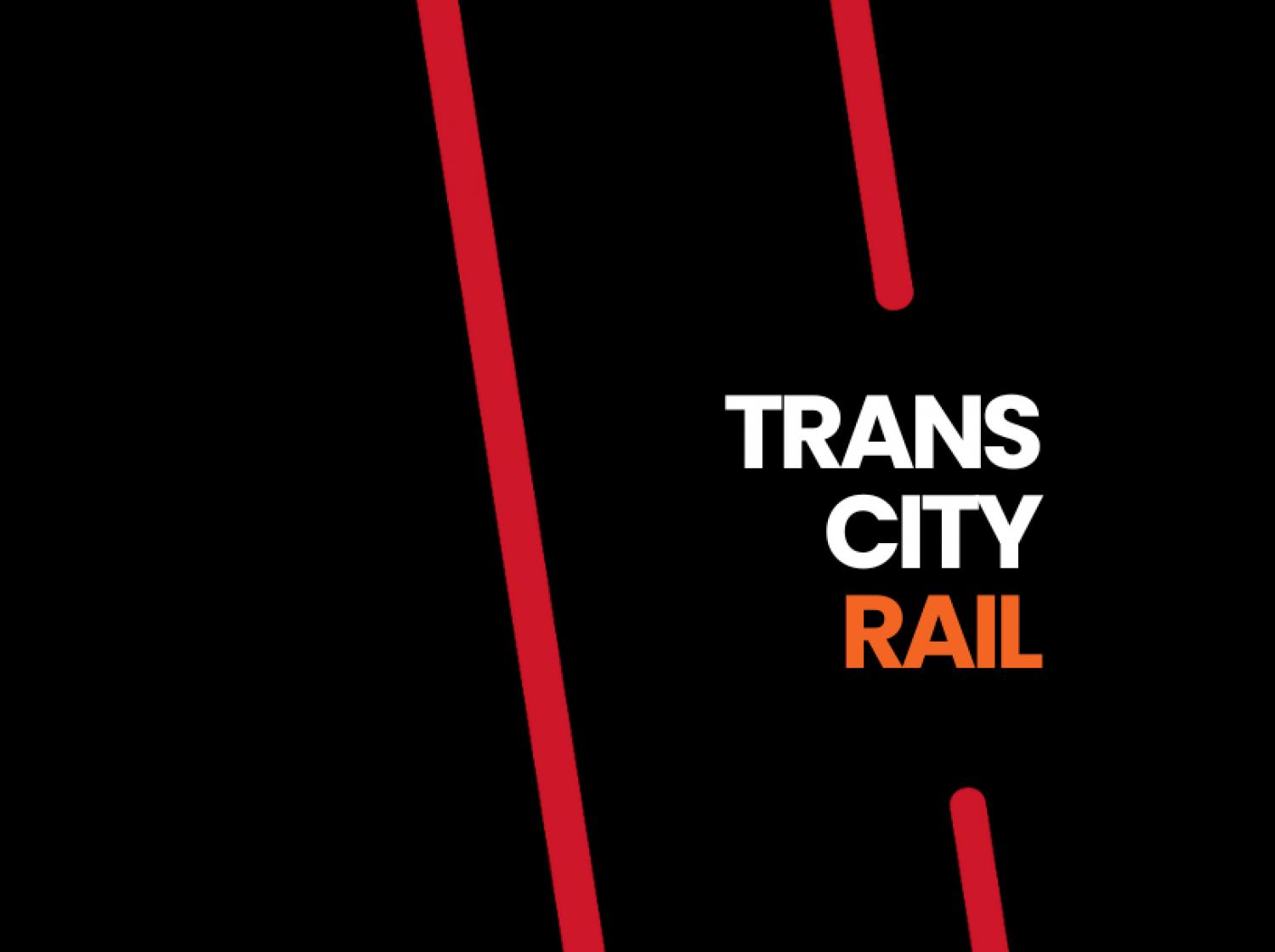Ahead of TransCityRail Midlands, Rail Technology Magazine spoke to Andrew Dugdale, Systra’s Market Director for Rail, Metros, LRT and Highways, about the ways that major transport projects can be supported in the Midlands, as well as how key factors can significantly improve the delivery of these programmes.
Communities around the country rely on efficient transport links to really thrive. Whether it is getting to places of learning, places of work, or simply travelling for leisure, ensuring that people are able to freely move will greatly influence the prosperity of communities. Andrew touched on the role that improved transport links can play, saying: “I think it’s commonly accepted that better access to transport of whatever nature improves people’s mobility and improves their choice. Improved choice, be that education or employment, as a consequence of driving up the local economy and improving GVA and people’s contribution to the wellbeing of the country.
“I think, if you look at what’s been achieved in London over the last 20 years, it has had a hugely positive impact. The way that schemes in and around London have transformed the economy – you look at London overground, North London line, East London line and the impact they’ve had, the introduction of Crossrail recently – demand is outstripping supply already on those lines. House prices have significantly increased on those corridors and businesses have got more access to better people, so absolutely it’s a win-win for everybody involved.
“We just need to see that same level of commitment across the rest of the country.”
London’s transport system, and the developments over the course of the last two decades, have shown that effective transport and prosperity go hand in hand. The same, however, can be said for transport links that are not as effective, and this is where it is important, as Andrew mentioned to commit to improving transport all around the country.
Rolling out projects to improve transport nationally will bring huge benefits, with this being seen through the utilisation of projects such as the Midlands Rail Hub, the Midlands Metro expansion, and TriLink. Andrew delved into this further, whilst mentioning the impact that the cancellation of the HS2 projects beyond the Midlands could have: “It’s a difficult one. It’s a challenge I think we regularly ask ourselves in the industry.
“I think the events we saw late last year around the announcements on HS2 demonstrate that the industry is probably not getting its messaging right in a way that resonates with voters. Because I think we all accept that politicians make decisions based on the electorate and who’s most likely to vote for them then.”
Andrew then mentioned how the influence of certain projects, like HS2, can be decided by the rail industry through the use of messaging, whilst there is an inevitable knock-on effect from larger projects to other more local transport networks. Andrew said: “If, as an industry, we were getting our messaging right, then everybody would want a lot more of HS2. Everybody needs a lot more of HS2, but not everybody will vote for it, and that’s the challenge we have. If we need a lot more of HS2, then at a local level we need more metros and more urban transport. For all the reasons we say about increased mobility- our cities are going to get clogged up if we continue to rely on personal access to cars of whatever modes of power… the road network just does not have the capacity to cope.
“So mass transit of some form, whether it’s buses, trains, trams, monorails, they absolutely need it. In our urban environment we’ve got to demonstrate great resilience for that, got to attract passengers back; and if you think back to what’s happened since the pandemic, whilst people are not commuting in the same way that they were and commuters don’t really have a choice, they’re going to get to work at a certain time.”
Working on major transport projects can seem daunting for organisations that don’t have as much experience in delivering them, especially in times like the current where finances need to go further than ever before. Even with lots of experience, organisations always have the chance to look at other transport projects that are successful and use them to improve their own projects. As Systra operate globally, they have a great amount of experience that can be drawn upon. Andrew spoke about this experience as the topic turned to how affordability can be improved in major projects across the Midlands. He said: “Within Systra we operate around the world, we’re involved with a huge number of schemes, both for high-speed rail, conventional rail and mass transit LRT projects, so we deliver around 50% of the world’s metro systems.”
“So we’ve got the huge experience to pull on, and I think what we see is adoption of different technologies in different places around the world, from autonomous trams and trains – places like the Dubai tram [which is] completely autonomous on-street running- the approach to command control, and which vehicles get priority at junctions and intersections. But the approach to land and planning laws is massively different, and I think in this country we see new schemes that require land purchase become extremely problematic, that is where the UK is very different. And I wouldn’t propose for a minute that we try as an industry on our own to rear out legislation, but I think if the country wants to build projects on the scale of HS2 in the future, it really needs to look at laws around planning, development, and access to land.”
One of the final points mentioned above by Andrew touches on how the industry shouldn’t attempt to do everything on its own, and this leads the conversation to how collaboration can support the development of infrastructure projects in a way that is both successful and cost-effective. The role that the supply chain plays means that it is positioned to support the rail industry to make the development of important projects as cost-effective as possible.
This collaboration was developed further by Andrew, who spoke about his own experience of using collaboration: “I think collaboration is everything. In the short time I’ve been at Systra [we] have really seen the importance that we as a business put on collaboration through the UK. You can’t deliver projects on your own, so you need help from somebody else, either at a personal level or at a business level.
“That collaboration and how people do business with each other, how companies do business with each other, is absolutely key and one phrase we’ve been using a lot recently is ‘commercial agreements drive behaviours.’ I think we all need to learn from that. Whether you’re the client at DfT (Department for Transport) level, Network Rail, and local authorities, or a one-tier contractor, the rules that we set down between us drive the behaviours.
“Businesses are businesses, and they exist to make profit margins, albeit small profit margins, that we achieve across the sector. And we also recognise that, and we’ve got to help each other to achieve those margins… None of us want to see our partners and suppliers go bust.”
Whilst collaborating with private companies that exist within the supply chain can help to deliver cost savings, as well as support, there is also the option for using private companies to help with the funding for a project. This point has become a lot more prominent in the last year or so with the fact that major transport projects can’t necessarily rely on the public sector for investment. By forming a public-private sector partnership, alternative funding can be secured to support those major projects. Andrew applied this thinking and compared the idea of using government or using private funding to support a project: “They’ve all got a role to play. I think you would say the government has access to the cheapest borrowing of anybody, so if you want to borrow a lot of money and not pay a lot of interest, then the best place to borrow from is government-sourced finance. However, if you want to keep the national debt lower and maybe pay a bit more, over a longer period of time, then absolutely private banks and private finance have a role to play.
“I think what you have got to look at is, what’s the risk transfer that you’re pushing into the private sector? Is the appetite there? Is it well understood? Then, is the return period on that investment sustainable? So quite often, we see this with HS1 Channel Tunnel, for example, the payback period is tens of years. Can an investor afford to wait that long for the return on its investment?”
Andrew also discussed the importance of being smarter when it comes to benchmarking with costs and benefits of different projects. Whilst touching on the fact that designers and contractors need to be given access to more benchmark data so that they can better understand how the capital costs of projects can be reduced, he mentioned the Midlands Rail Hub project: “When you look at projects like Midlands Rail Hub, how do you deliver benefits early? What’s your sequencing? Not just that suits construction, but also that suits the public, passengers, and freight.
“We are engineering and delivering infrastructure that enables trains to run on different patterns, or more trains to run at different frequencies or longer trains. How do we achieve that faster? And how do we come together as a rail industry – and I include the operators, Network Rail, DfT in all of that – to say ‘right we’ve delivered a platform lengthening, why do we have to wait until we’ve done all of them to run longer trains?
“How do we release early benefits on schemes and make sure we don’t lose sight of those benefits we’re delivering.”
There are widespread benefits of undertaking major transport projects, ranging from economic growth to improved opportunities for local communities, however, one that can have a global impact relates to sustainability.
Using public transport in the right way can reduce carbon emissions by getting people out of cars, whilst also making it easier for people to embrace active travel. Andrew spoke about how transport projects across the midland can be aligned with sustainability goals and minimise their environmental impact: “Sustainability comes in many facets. Whether you’re looking at minimising the impact of climate change, whether you’re looking to reduce whole life carbon costs or embedded carbon costs, whether you’re looking at biodiversity and we’ve seen a lot of work done with Network Rail recently on lineside biodiversity to improve the corridors along the railway. We’ve been looking at new schemes and how we improve the biodiversity and natural environment around rail corridors and tram corridors...
“We’re actually looking at how we create green corridors that are not just more visually attractive, but also environmentally more sustainable to really bring that ecology to lie in an urban environment – so there are lots of ways you can do it.”
Andrew then developed on this, mentioning the environmental challenges that the rail industry faces, and how outside issues form bumps in the road: “I think the challenge we’ve got is remembering that, whilst across transport we are measuring carbon emissions at the exhaust pipe, we are still generating electricity from unclean sources in many areas and the national grid is going to really struggle to cope with the demand for all the electric cars, or the electric trains, trams, electric heating of our houses – all that we aspire to achieve at the moment.
“What we need to do as a transport sector is actually reduce our consumption of energy, wherever that energy source is, and the best way of doing that is to reduce the amount of friction.”
Sustainability has helped the rail industry to drive innovation across the board, and this does help contribute to efficiency and effectiveness. By introducing more technology, and embracing digital innovation, organisations across the rail industry can bring increasing benefits to communities and businesses by making transport systems more effective.
When speaking about the ways that technology and innovation can deliver efficiency benefits for communities, Andrew mentioned how it can apply to two different parts of the transport delivery process. The first comes with the of technology during the construction process, about which Andrew said: “We’ve been looking very hard at tech during construction, making sure we’re not just deploying tools for deploying tools sake, that they’re actually right to be there; and we’re deploying the right apps that help us be more efficient and effective in everything we do.
“We’re absolutely rigorous at Systra in making sure that our application of digital tools and software solutions are making us faster, cheaper and more efficient and improving the excellence in everything we do. I think, from a community engagement perspective, there’s a lot more we could be doing in the industry; during construction and in operation we’ve seen on HS2 the absolute mountain of letters that landowners have received to gain access to their land, to do numerous site investigations… if we can shift that as we have done into a real-time platform on a digital basis, we can make our stakeholders lives much more efficient and effective in the construction sector…
“We can also help drive social value into communities by providing a communication platform with local communities and offering that up to support local businesses.”
The second way that digital innovation can improve the delivery of transport comes through operational benefits, such as delays, that Andrew touched on briefly: “In terms of operationally, it benefits the way the rail sector communicates with the outside world. We all hate it when our trains are delayed, don’t we? But that interferes with the onward journey, whether it’s changing trains or moving from a train to a tram, to a metro, to a high-speed intercity train service.
“It’s not just notifying the customer that the train is delayed by 5/10 minutes, what’s the knock-on consequence for the rest of their journey? How do we make it more seamless?”
As technology develops and community engagement becomes easier, the steps involved in bringing communities into the fold when it comes to planning and decision-making processes are evolving. By engaging with communities, the organisations that are undertaking major transport projects can make sure that local needs are met, as well as address any concerns that residents might have.
Delving into this side of transport decision-making, Andrew commented: “I think, what we’re very good at in industry is engaging with passengers that are already on the train, but that’s less than 5% of the population. We’ve got to talk to the other 90% that are not engaged with the wider rail and mass transit debate. I think we’ve really got to open our doors, sit to face them.”
Andrew also pulled other important factors into this part of the conversation, saying that: “That 90% of people is key to dealing with climate change and achieving the modal shift that we absolutely need., So we’ve got to find a way of getting those passengers onto trains. I think some of the issue is they just don’t know how to engage with trains.”
With the Midlands forming such a large, and important, part of the country, the needs of communities around the region will vary considerably. It is vital that investment planning around major transport projects considers those diverse requirements. Andrew explored how this can be done: “You’ve got to communicate to the local community, and you’ve got to engage them. You’ve got to give them a platform.
“Engagement is not about putting a lot of news on a website – that’s not completing the communication cycle – communication is two-way. Yes, we’ve got to get news out, but we’ve got to get feedback and we’ve got to understand whether the people we’re talking about actually understood what we said, or whether they’ve taken a really different message.
“Looking across the Midlands, the huge diversity of the population, with lots of different needs – whether its mobility needs, whether it’s language needs, whether its travelling at different times of the day. One of the frustrations is how do medical staff get to hospitals to work their shift patterns because our trains don’t always support that.”
Whilst it is one thing to understand that engagement needs to take place, it is also important to consider the differences that proper engagement can make. Andrew went on to discuss how he believes transport can change if that engagement is carried out properly around the Midlands: “When we start to engage with that 95% of the population that are not travelling by tram and train at the moment, I think we’ll start to think differently. We’ll design our stations differently, we’ll design the routes differently, we’ll design the frequency of our train service differently.”
Overall, it is vital that those leading major transport projects are able to bring together collaboration, engagement, and innovation to ensure that the projects being delivered to communities are fit for purpose and will bring the benefits that are intended. Without any of these steps, the projects risk not quite fulfilling the requirements of the people using them.
Image credit: iStock

